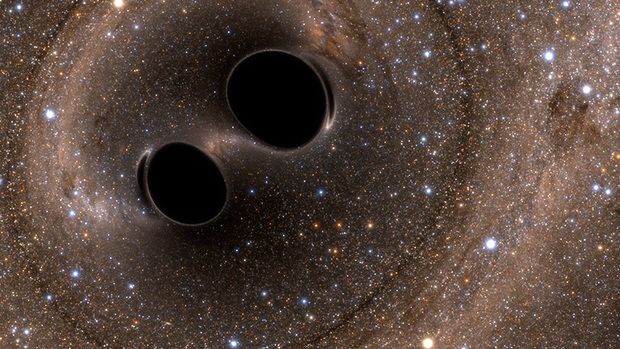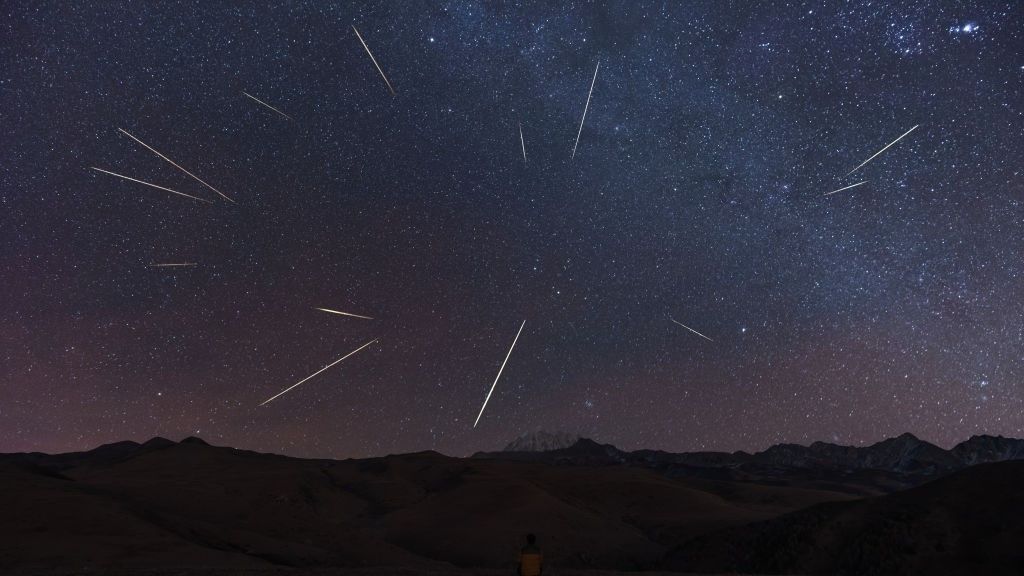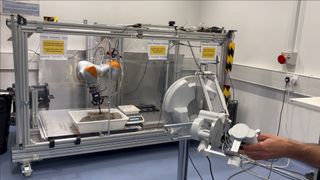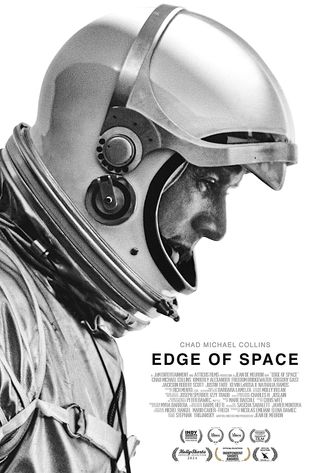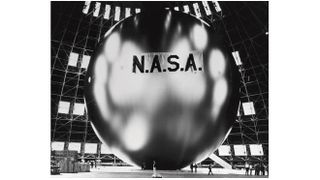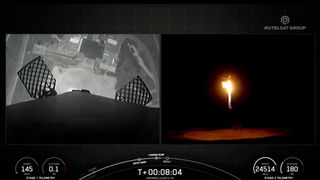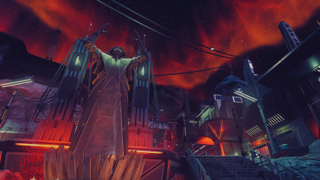Black hole mergers are beautiful — and some of the most violent events in the cosmos. Here’s how the process unfolds. The story begins with two black holes orbiting far from each other in long, lazy circles. They could have been born as a binary pair of stars, or they may have just randomly encountered each other in the depths of interstellar space. Either way, to merge, they must get close, which means losing a lot of orbital energy. The first step in stealing energy from the system is through…
Read MoreCategory: Solar System
Our solar system
Matthew McConaughey introduces the monstrous Mara-Yama in creepy new ‘Exodus’ trailer (video)
NEW EXODUS CINEMATIC — ‘The Mara Yama’ Reveal Trailer – YouTube Watch On “Do you know what fear is? The Mara-Yama do.” “Exodus,” Archetype Entertainment’s expansive sci-fi RPG, could be 2025’s most sought-after gaming title. A new cinematic trailer for it, narrated by Matthew McConaughey, was just unleashed this week — and it might be the single most unsettling teaser you’ll see all year. The hideously deformed alien creatures, which were once human beings, in their odd arkship evoke a hellish air of Lovercraftian cosmic dread that viewers will not…
Read MoreMost of Earth’s meteorites may have come from the same 3 spots
Earth is constantly getting pummeled by meteorites. We are unaware of most of them, as they burn up in our atmosphere before they hit the ground. Every now and again, though, something larger gets drawn into Earth’s gravitational field — and when this happens, it usually spells bad news for any life living on our planet’s surface. Scientists know that the vast majority of meteorites that come crashing down to Earth originate from the solar system‘s main asteroid belt: a region between Mars and Jupiter where irregularly shaped rocks left…
Read MoreRemote-control robots could help humanity explore the moon and Mars
Teleoperated rovers could soon be working on the moon, with human controllers on Earth manipulating the rovers’ tools virtually, allowing for greater dexterity when taking samples, digging or assembling. Researchers from the robotics laboratory at the University of Bristol in England have tested their new teleoperations system at the European Space Agency‘s (ESA) European Centre for Space Applications and Telecommunications at Harwell in Oxfordshire. By controlling a virtual simulation of a rover, they were able to manipulate a robotic arm to dig a sample of pretend lunar regolith (called simulant).…
Read More‘Edge of Space’ director Jean de Meuron on his X-15 film and having ‘the right stuff’ (exclusive)
Soaring in with the unbridled spirit of classics like director Philip Kaufman’s “The Right Stuff,” a new short film making the festival rounds and being submitted for Oscar contention is indie filmmaker Jean de Meuron’s “Edge of Space.” This 18-minute cinematic flight starring Chad Michael Collins is a thrilling leap into the wild blue yonder. It offers an absorbing glimpse into NASA’s X-15 rocket plane, which flew from 1959 to 1968, and we’ve got an exclusive high-altitude clip to share. That legendary hypersonic rocket-propelled aircraft was an experimental marvel drop-launched…
Read MoreBlowing up: Inflatable space habitats could be key to exploring the solar system
It’s high time to crank up the volume in space! That’s the shout from several private firms that want to see an inflation factor for the future. What is now being evaluated and tested is the use of “softgoods” to fashion inflatable/expandable airlocks and off-Earth habitats, not only for low Earth orbit, but also to provide comfy housing for future moon and Mars explorers. First, however, there’s a memory lane trip about this idea worth taking, one that also underscores how far things have evolved. NASA’s Echo balloon project in…
Read MoreSpaceX launches 20 Eutelsat OneWeb broadband satellites to orbit
SpaceX sent a set of internet satellites to orbit for another company early Sunday morning (Oct. 20). SpaceX launched the last batch of Eutelsat OneWeb’s V1 satellites from California’s Vandenberg Space Force Base atop a Falcon 9 rocket on Sunday at 1:13 a.m. EDT (0513 GMT; 10:13 p.m. on Oct. 19 local California time). The Falcon 9‘s first stage returned to Earth as planned, touching down at Vandenberg’s Landing Zone 4 about eight minutes after lifting off. It was the seventh launch and landing for this particular booster, according to…
Read More‘Starfield: Shattered Space’ is outlandish enough, but won’t alter your perception of the game (review)
Starfield’s hopeful exploration of mankind’s future among the stars (with a healthy dose of zany sci-fi thrown in too) seemed to convince enough critics when the game launched a little over a year ago, but it also faced harsh criticism from longtime Bethesda fans and players expecting much more advanced game design. Does the Shattered Space expansion fix any of those central issues? The short answer is: no, not really. Bethesda Game Studios seems to be quite proud of Starfield overall, and it makes sense that the studio is sticking…
Read MoreThis Week In Space podcast: Episode 133 —Red Moon Rising
Red Moon Rising – Artemis, Commercial Space, and the China Challenge – YouTube Watch On On Episode 133 of This Week In Space, Rod Pyle and Tariq Malik talk with Greg Autry on the progress of the Artemis moon program, space science, and the challenges posed by a fast-rising Chinese space program. Dr. Autry is the Associate Provost for Space Commercialization and Strategy at the University of Central Florida, visiting Professor at Imperial College London, former NASA transition team member, and author of “Red Moon Rising.” We’ll also highlight the…
Read MoreNew ‘Dune: Prophecy’ trailer unveils the prequel series’ grand scope (video)
Dune: Prophecy | Official Series Trailer | Max – YouTube Watch On HBO’s “Dune: Prophecy” is poised to be an irresistible miniseries for “Dune” fans when its six-episode season enters our galaxy on Nov. 17, 2024 on HBO and Max. The initial teaser rolled out back in May, but today (Oct. 18) at NYCC during the “Dune: Prophecy” panel on the Empire Stage that included showrunner Alison Schapker, executive producer Jordan Goldberg, and cast members Emily Watson, Olivia Williams, Travis Fimmel, Sarah-Sofie Boussnina, Josh Heuston, Chloe Lea, and Jessica Barden,…
Read More